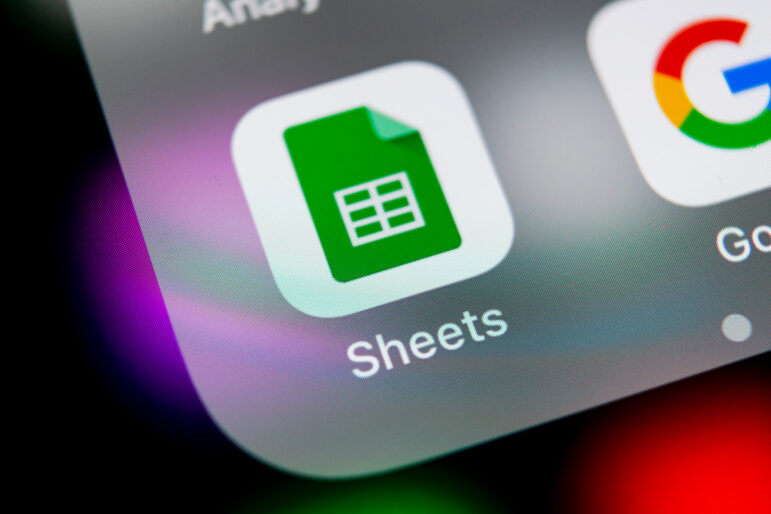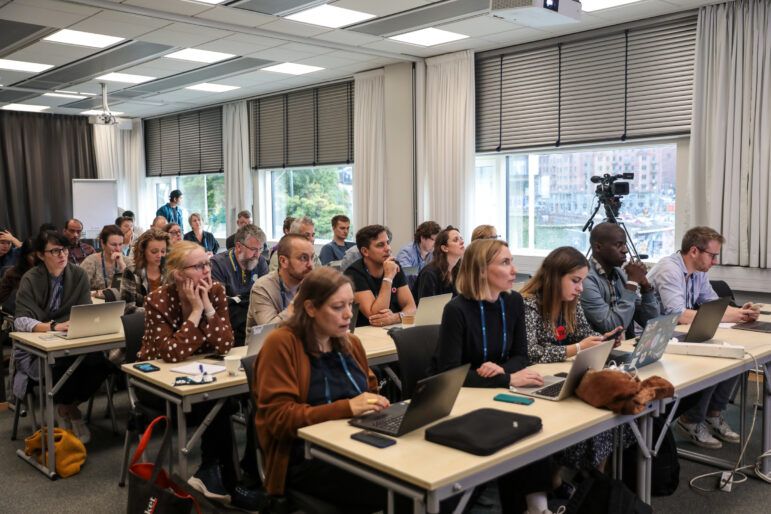

Explaining the Pandemic: 2020 Data and Visual Journalism Projects on COVID-19
Read this article in
In visual journalism and data analysis, the topic that set the trend for the year was definitely the COVID-19 pandemic. The following projects showcase the different angles of investigation and analysis with which visual and data journalists around the world have helped us to better understand the emerging coronavirus SARS-CoV-2.
The selected projects demonstrate that journalism should be useful, and that when it is done to explain something that affects people, the user’s response is to trust and recognize the value of such content. The use of data, its understanding, and transformation into visual journalism is irreversible — don’t resist it. Be prepared to think and do journalism with that in mind, to acquire multidisciplinary skills, and to learn to play as a team.
Decoding COVID-19
The fundamental impact of data visualization was to help us understand and give useful answers in the midst of the great uncertainty of the pandemic. Hand in hand with visual and data journalists, we have been decoding what COVID-19 is and how we can learn to live with it. It served to educate us, assimilate epidemiological terms, and speak of them properly. It has served to take care of us.
COVID-19 demonstrated, conclusively, that data analysis has never been a fad but rather a core necessity of the journalistic exercise of the 21st century. In that sense, the pandemic [rewarded] the media and journalists who have consistently, within the last decade, strengthened this way of presenting facts. Sadly, it also exposed the media that have underestimated or suppressed data analysis and visualization teams in recent years. It also left a great lesson for journalists who, prior to March 2020, believed it was irrelevant to learn to analyze data.
Sustaining the Practice
There are three influential factors: persistence of the visual journalist, training, and editorial and managerial vision for the media.
In the last five years, my experience as a teacher in Latin America has taught me that many good initiatives of data journalism and visualization come from journalists themselves, and not from those who run the newsrooms. Journalists who — in order to publish valuable content — fight against the myopia of editors and managers. They do it in their spare time and with the minimum tools available, searching for funds on their own. In those cases, the persistence of the journalist makes the difference, and we must acknowledge that effort.

Reuters’ use of humor in this graphic helped explain how vaccines interact with the human immune system. Screenshot
Staying firm on the path of journalism that explains data visually also implies training to be able, for instance, react quickly and properly to a news story. The Financial Times team has done this, explaining why it is important to know statistics and go beyond basic arithmetic when analyzing and graphing data.
Finally, for data visualization to be sustainable over time, we need editors and managers with long-range vision, who strengthen and expand multidisciplinary teams within newsrooms. In the words of Javier Zarracina, graphics director for USA Today: Infographics are the engine of change in newsrooms.
Trends Set in 2020
Last year taught us that data analysis in journalism must be [better] tied to mathematics and statistics. It has become clear that rates should be used to compare the incidence of the virus between countries or regions, and that mathematical simulation models are useful. And it’s also clear that learning to use programs like R and Python to automate some processes, and to handle databases like the one from Johns Hopkins University. are relevant in order to:
- Estimate the case duplication indicator on one’s own account and compare it with official data.
- Use the logarithmic scale instead of the linear scale in graphs for more precise comparisons of growth rates of infections between countries.
Another trend is that we must understand multidisciplinary aspects; not only working with engineers and designers in the newsroom, but also with scientists, epidemiologists, academics, and all those specialists who generate valuable knowledge.
This year has also taught us that journalism must examine data with less passion and more science — that is, to assimilate data that, often, is a human product and therefore subject to biases and errors.
Finally, editors and media managers have hopefully understood that good visual information is rewarded by the audience, and is profitable, if they have the vision to invest and develop those areas.

Peru’s Ojo Público was among the first newsrooms to use data analysis of public contracts to reveal the exploding business around surgical masks and N95 respirators. Screenshot
In terms of storytelling and visualization, this year consolidated:
- The “scrollytelling” technique in the design of websites.
- The use of animations to explain the scope of key concepts.
- The cases to use static and interactive graphics. Graphics tend to be more static, with detailed explanations to amplify the user’s understanding of the topic. Interactivity is in the background and justified when the user is guided to discover something of interest. For example: the virus reproduction rate for the specific community where it resides.
- The fact that data visualization is not just graphics, but any element that increases the understanding of the subject for the user. The use of the resource depends on which one helps to better fulfill the purpose of informing.
- The fact that text should be clear and concise.
COVID-19 inaugurated an era in which good visual journalism must be translated into multiple languages because its quality and usefulness are essential in an interconnected world.
Find the complete list of projects I’ve collected throughout the year. It is likely that there are many more that I do not know of and may have slipped my radar. I invite you to share your favorites by tweeting me @HasselFallas.
Additional Reading
My Favorite Tools: Alberto Cairo on Data Visualization
10 Tips for Visualizing COVID-19 Data
GIJN Resource Center: Visualizing Data
GIJN Resource Center: Visualization Tools
This article was first published by Hassel Fallas on her website La Data Cuenta/Data Counts. It is republished here with permission.
 Hassel Fallas is a consultant and trainer in research based on data analysis, visualization, and storytelling. She is the principal investigator of the Femicide Data Standardization Project in Latin America and the Caribbean, and a senior lecturer in data journalism and visualization at the University of Guadalajara, Mexico.
Hassel Fallas is a consultant and trainer in research based on data analysis, visualization, and storytelling. She is the principal investigator of the Femicide Data Standardization Project in Latin America and the Caribbean, and a senior lecturer in data journalism and visualization at the University of Guadalajara, Mexico.










